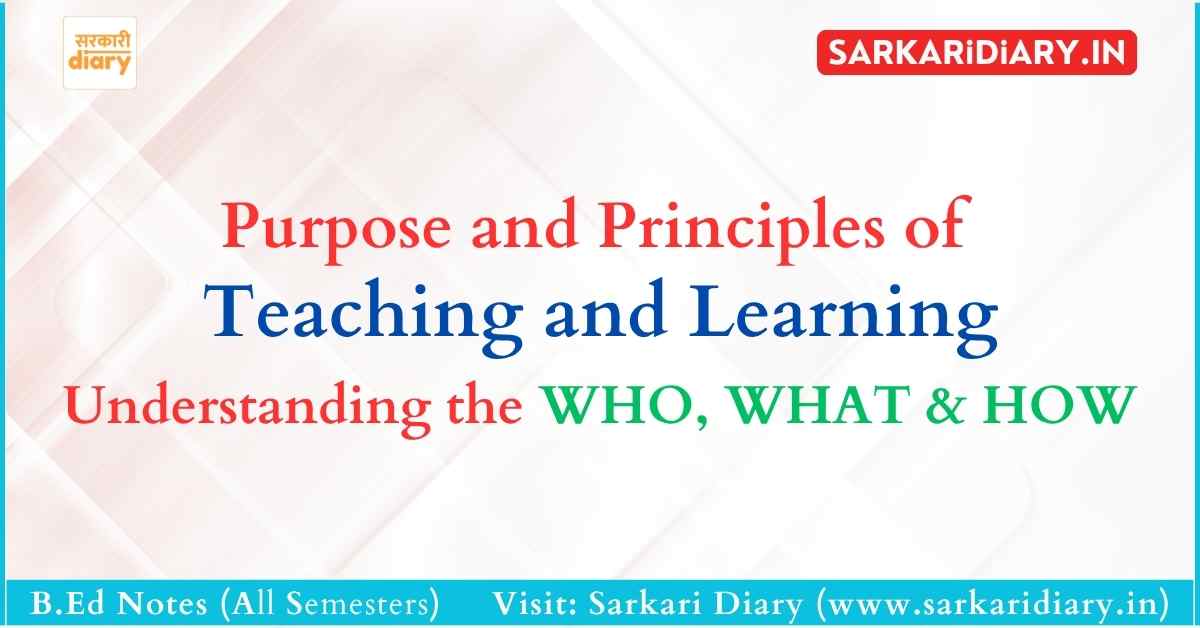Teaching and learning are central pillars of the educational process. To deliver effective instruction, a teacher must understand not only the content (WHAT) and the methods (HOW), but also the learners themselves (WHO). Educational psychology offers a structured approach to integrate these three essential components.

The Teaching–Learning Triad: WHO, WHAT, HOW
At the heart of effective pedagogy lies the integration of:
- WHO – The Learner
- WHAT – The Content and Curriculum
- HOW – The Method and Approach
This integration ensures that teaching is not only informative but also transformative.
WHO – Understanding the Learner
Teaching must be adapted to the uniqueness of the learner. Educators must consider various learner characteristics:
| Learner Characteristics | Description |
|---|---|
| Cognitive Development | Stage and style of intellectual growth |
| Socio-Emotional Factors | Level of anxiety, socio-economic background, emotional needs |
| Individual Differences | Includes learning styles, gender, socio-economic status (SES), culture, and special needs |
Guiding Question:
Does my HOW reflect the developmental limitations and uniqueness of my WHO?
WHAT – Curriculum and Learning Objectives
The ‘WHAT’ refers to the curriculum, its purpose, and the specific learning outcomes intended for students.
| Curriculum Elements | Key Questions |
|---|---|
| Purpose of Curriculum | What is the goal of this curriculum? |
| Scope and Sequence | How does it fit into the student’s educational journey? |
| Learning Objectives | What should the student learn? |
| Assessment and Demonstration | How will learning be demonstrated or measured? |
Guiding Question:
Is my HOW tailored to my WHAT?
HOW – Teaching Strategies and Methods
The ‘HOW’ encompasses the tools, strategies, and theories used to facilitate learning. This includes both psychological theories and practical classroom techniques.
| Methodology/Strategy | Application in the Classroom |
|---|---|
| Principles of Motivation | Engaging students through relevance and interest |
| Behavioural Theories | Applying reinforcement (e.g., Need/Drive theory) |
| Expectancy Theories | Focusing on learners’ belief in their own ability (self-efficacy, attribution) |
| Classroom Management | Structuring and organising the learning environment |
| Prevention and Intervention | Anticipating learning challenges and addressing them effectively |
| Remediation Techniques | Providing support to struggling learners |
Role of the Teacher: Beyond Instruction
While a teacher’s primary role is instructional, they also serve as:
- A Planner – Designing meaningful learning experiences
- A Facilitator – Guiding students through active engagement
- An Evaluator – Assessing performance and progress
- A Manager – Bringing order, discipline, and structure to the learning space
Effective Teachers Demonstrate:
| Skills | Description |
|---|---|
| Classroom Organisation | Efficient use of time, space, and materials |
| Rule Management | Setting and maintaining clear expectations |
| Didactic Teaching | Skillfully transforming content into accessible curriculum |
Teaching as Both Science and Art
Though teaching involves creativity and intuition, it is also a science grounded in research, theory, and best practices. Once the scientific principles of teaching are understood, they can be practised, refined, and mastered—eventually becoming second nature to the educator and appearing as effortless artistry.
Conclusion
Effective teaching is an integration of WHO we teach, WHAT we teach, and HOW we teach. Understanding each component allows educators to deliver instruction that is learner-centred, goal-oriented, and strategically implemented. By embracing both the science and art of teaching, educators can truly make a lasting impact in the classroom.